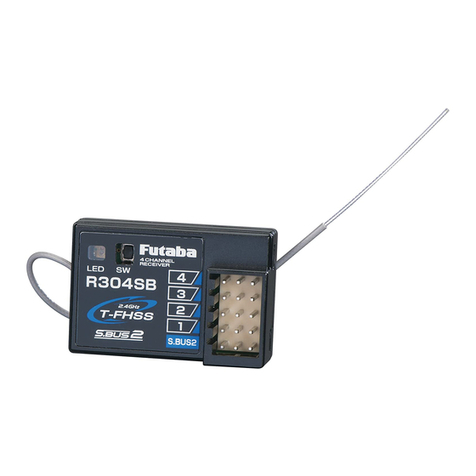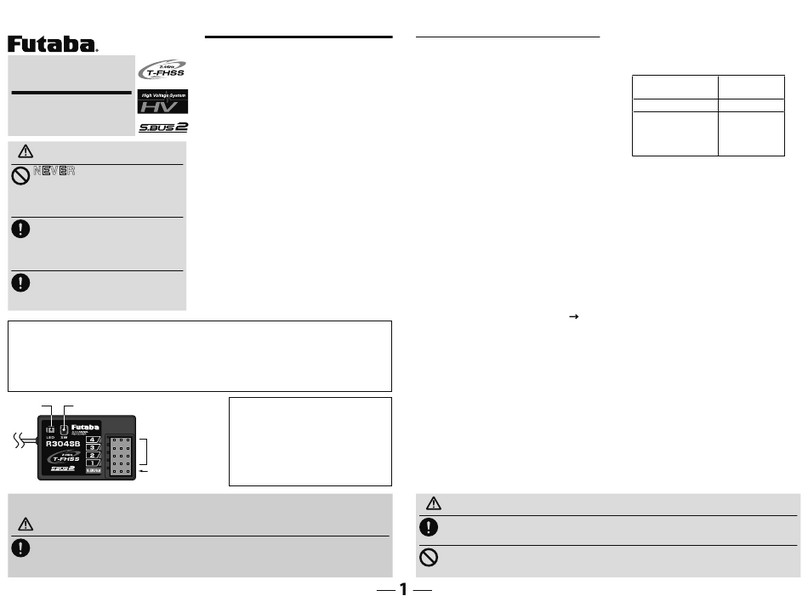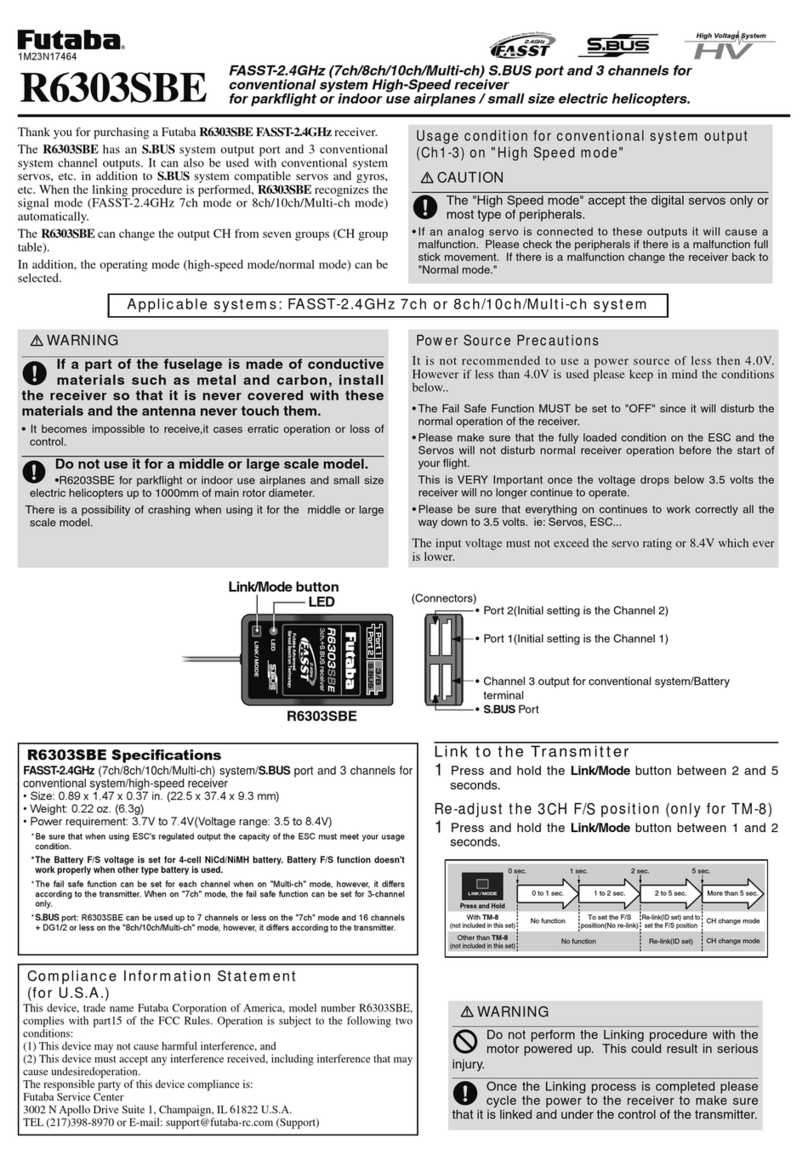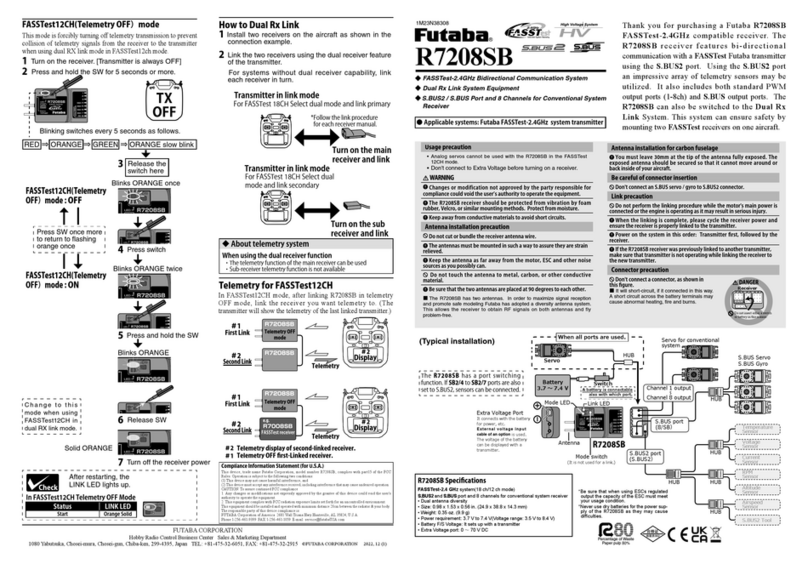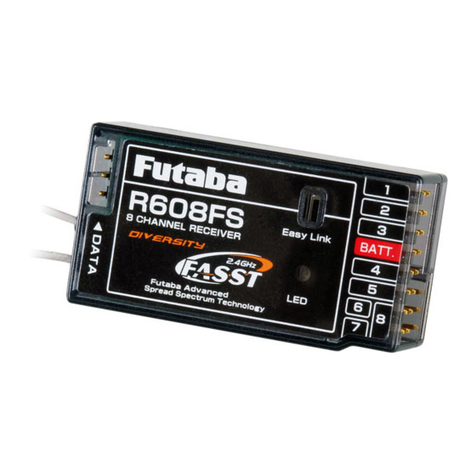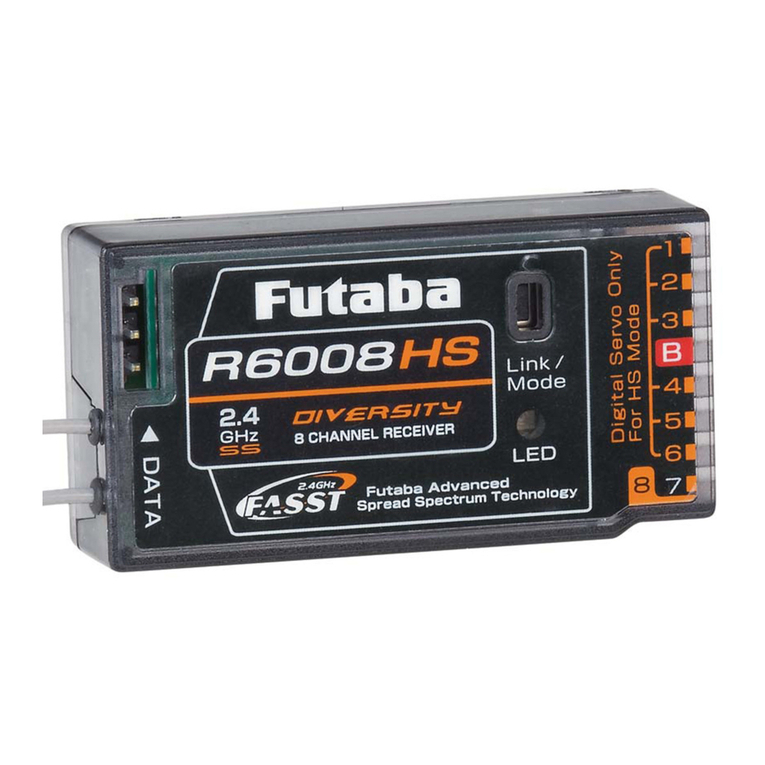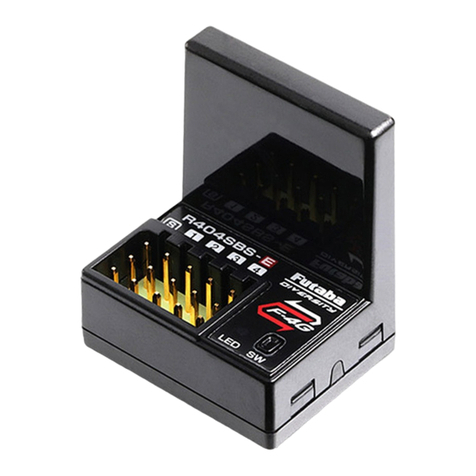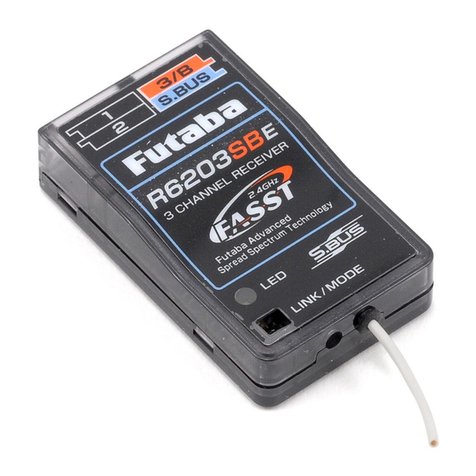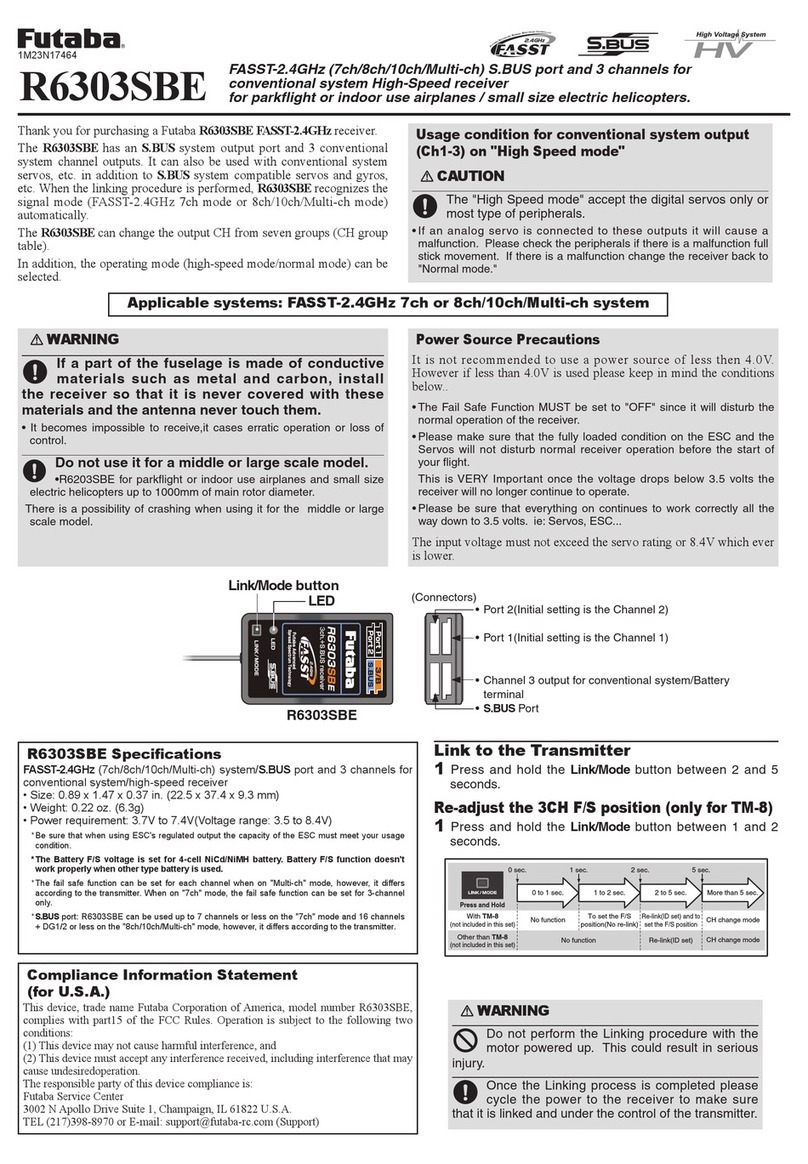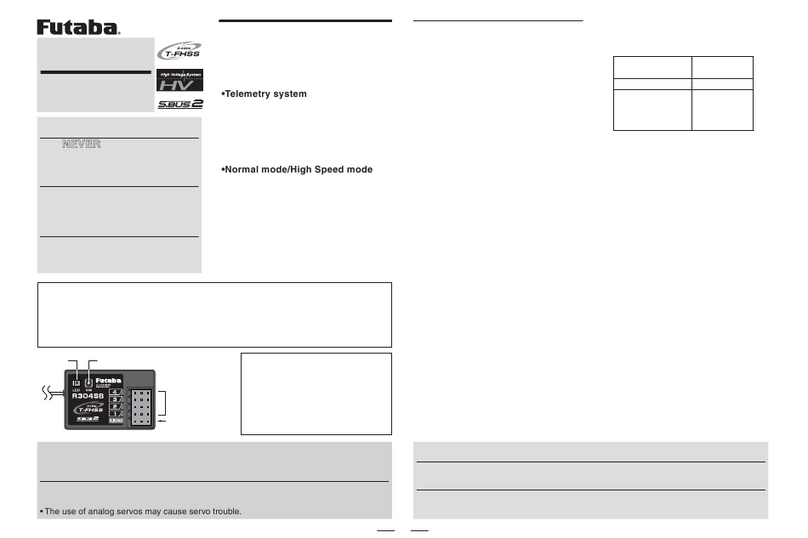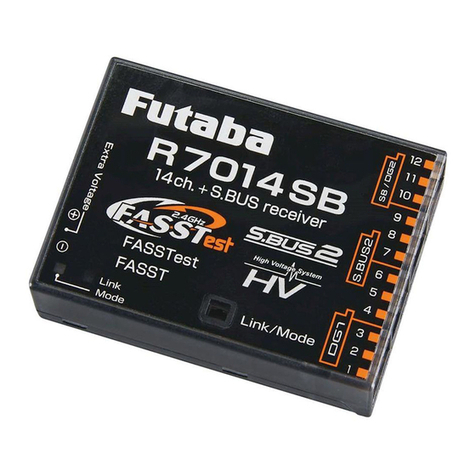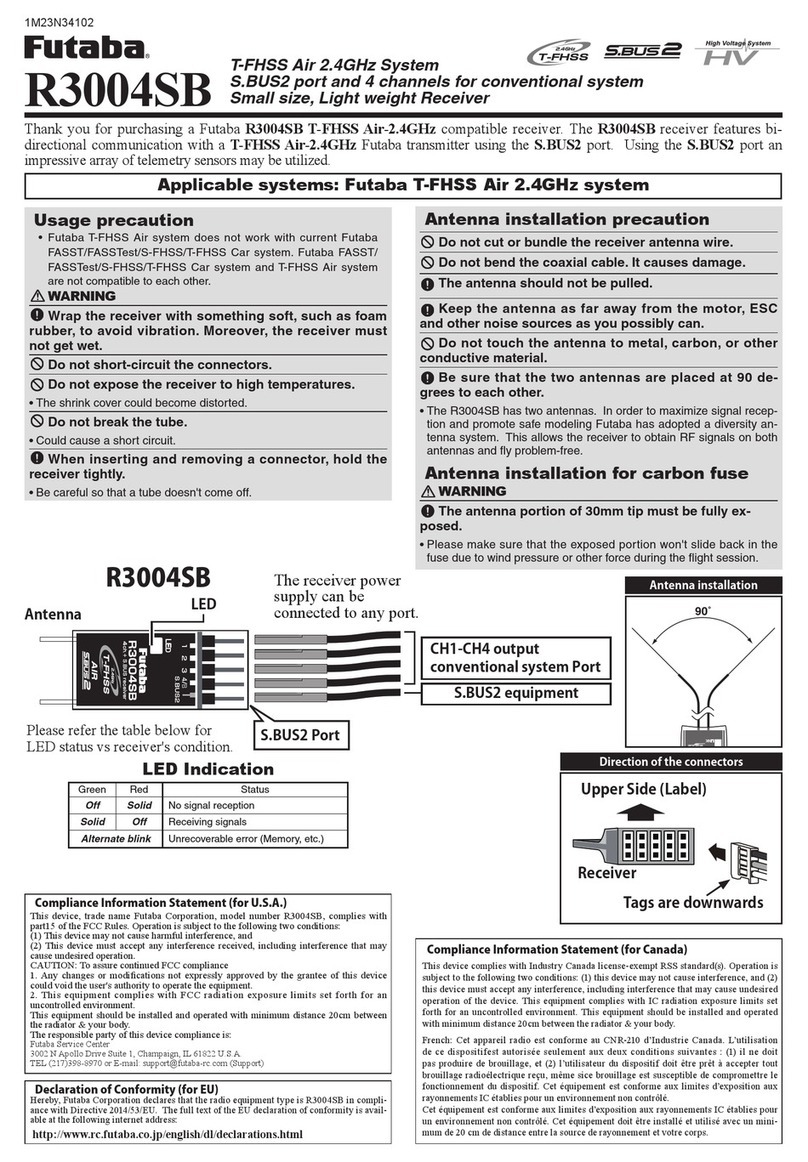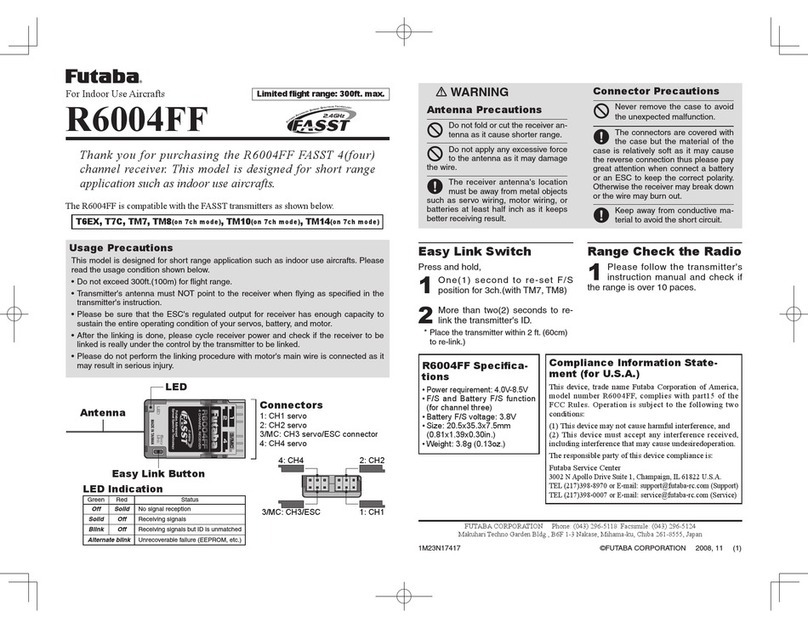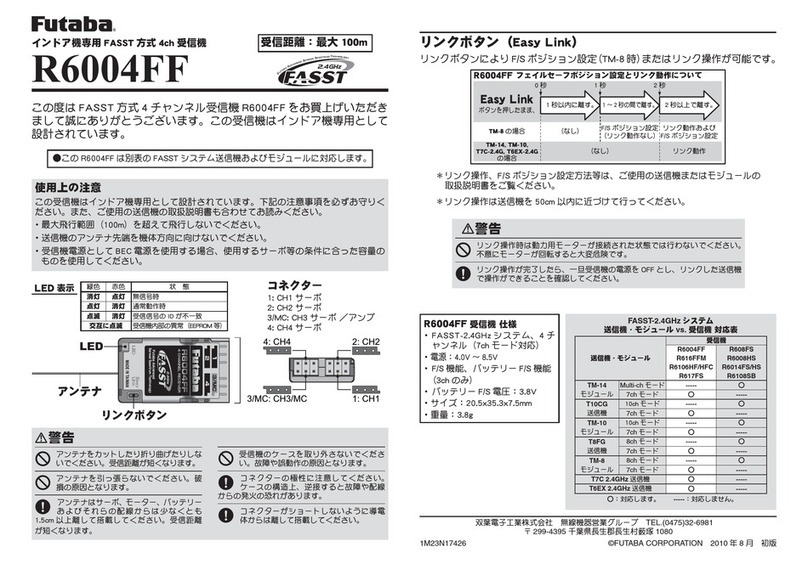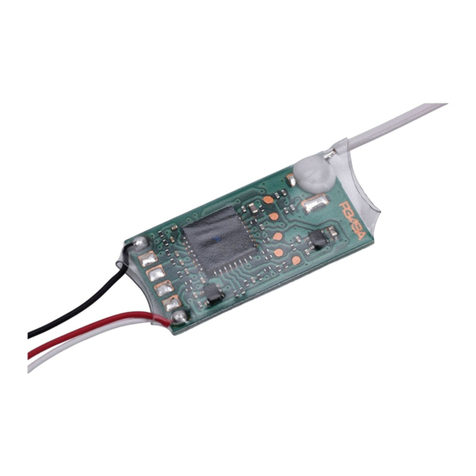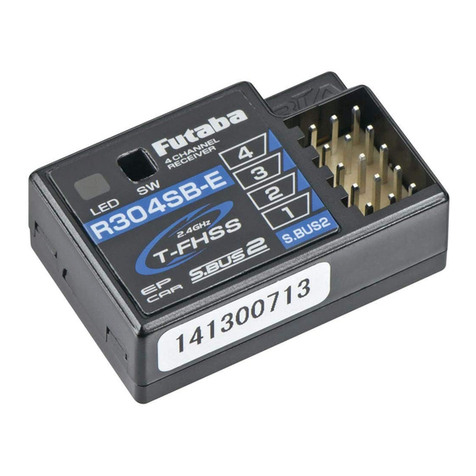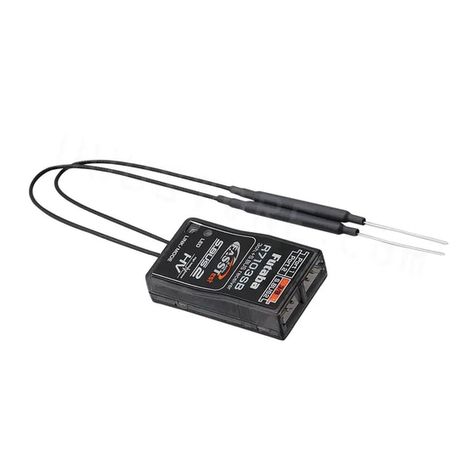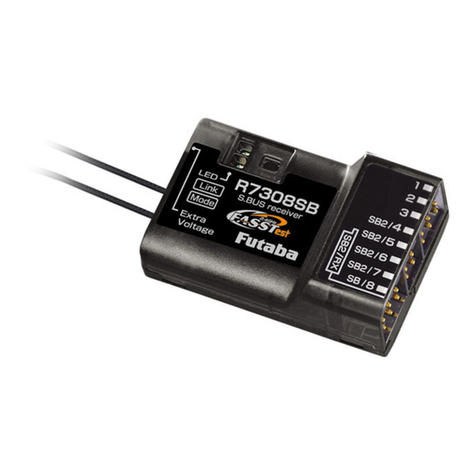
FUTABA CORPORATION
1080 Yabutsuka, Chosei-mura, Chosei-gun, Chiba-ken, 299-4395, Japan
Phone: +81 475 32 6982, Facsimile: +81 475 32 6983
©FUTABA CORPORATION 2016, 12 (1)
Link to the transmitter
1Bring the transmitter and the receiver
close to each other, within 20 inches (half
meter).
2Turn on the transmitter.
3Turn on the receiver.
4Press and hold the Link switch more
than two (2) seconds. When the link is
complete, the LED in the receiver changes
to solid green. When the ID cannot be
read due to the surrounding environment,
try reading it with the transmitter and
receiver antennas touched.
WARNING
Do not perform the linking procedure with the
motor's main wire connected or the engine operating
as it may result in serious injury.
When the linking is done, please cycle receiver
power and check if the receiver to be linked is really
under the control of the transmitter to be linked.
WARNING
Do not insert or remove the S.BUS connector while
the receiver power is ON.
Since the S.BUS servo switches the operation mode automatically
according to the type of signal (S.BUS signal/PWM signal) from the re-
ceiver, if the connector is inserted or removed while the power is ON, an
S.BUS connected servo will be erroneously recognized and may stop.
WARNING
Turn on the power on transmitter →receiver in
order. In addition, always check the operation of all the
functions before flight.
• When you use TM-FH RF Module, the fail safe function can be set
for channel 3 only.
• If there are many S-FHSS systems turned on in close proximity, your
receiver might not link to your transmitter. In this case, even if the
receiver's LED stays solid green, unfortunately the receiver might
have established a link to one of other transmitters. This is very
dangerous if you do not notice this situation. In order to avoid the
problem, we strongly recommend you to doublecheck whether your
receiver is really under control by your transmitter by giving the stick
input and then checking the servo response.
SBD-2
Battery
Battery
S.BUSPort
3/B:Conventional
CH3Port
R2001SB
Receiver
S.BUSPort
3/B:Conventional
CH3Port
R2001SB
Receiver
Hub
Hub
●Canalsobeusedtogetherwithconventionalservo.
●TheSBD-2/SBD-1isaconverterforusing
conventionalservoswiththeS.BUSsystem.
◆SBD-2
Eightservosareconnectable.
◆SBD-1
Threeservosareconnectable.
*BeforeinstallingtheSBD-1tothefuselage,seteachchannelat
eachservoconnector(SX1~3).UsetheSBC-1S.BUSchannel
changerorCIU-2/3USBadapter(S-Linksoftwareforsetting)to
setthechannel.
*Refertotheinstructionmanualofeachitemforthe
settingmethod.
S.BUS
Servo
S.BUS
Servo
S.BUS
Servo
Conve-
ntional
Servo
Conve-
ntional
Servo
Conve-
ntional
Servo
Conve-
ntional
Servo
Conve-
ntional
Servo
ŦƒƑƑƈƆƗƌƒƑŃ
ƅƜŃŶőťŸŶŃ
ƖƜƖƗƈƐ
ŦƒƑƑƈƆƗƌƑƊŃ
ƆƒƑƙƈƑƗƌƒƑƄƏŃ
ƖƈƕƙƒŃƗƒŃŶőťŸŶ
Transmitter
withS.BUS
setting
S.BUSservoCHsettingdevice
SBC-1 CIU-2/3
or or
DriversandLinkprograms
"S-Link"mustbeinstalled.
(Only3channel)
What is S.BUS?
Different from conventional radio control systems, the S.BUS
system uses data communication to transmit control signals
from a receiver to a servo, gyro, or other S.BUS compatible
devices. This data includes commands such as “move the
channel 3 servo to 15 degrees, move the channel 5 servo to
30 degrees” to multiple devices. The S.BUS devices execute
only those commands for their own set channel. For this
reason, it can be used by connecting multiple servos to the
same signal line.


